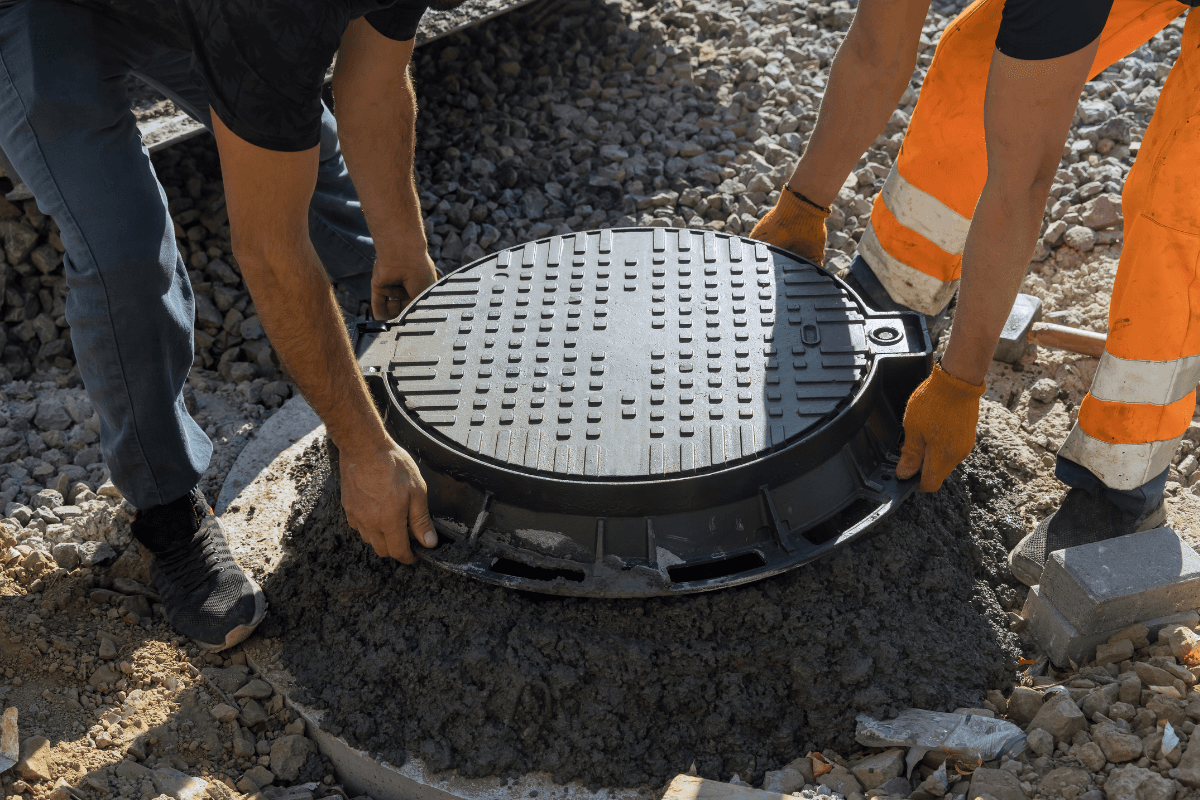Assessing Your Sewer Backup Insurance Needs in Canada
By Maude Gauthier | Published on 06 Jun 2024

Sewer backup insurance is a coverage that all Canadian homeowners should at least understand, even if it’s less relevant to those living in upper-floor apartments. Since it’s usually an additional coverage you have to add to your home insurance (and pay extra for), we’ll help you better understand its role and how to assess whether you really need it.
Coverage in the Event of Sewer Backup
Sewer backup insurance covers cleaning and repairing the damage caused by a backup in your sewer lines. Coverage includes the cost of fixing the physical damage and associated costs, such as replacing furniture, appliances, or other personal belongings that may have been damaged (provided they are covered by your policy).
Additionally, sewer backup insurance may cover any costs incurred due to temporary relocation while your home is being repaired. To be properly covered, you need to have insurance for your belongings and for relocation, in addition to specific coverage for sewage water.
Common Causes: Are You at Risk of Sewer Backup?
So, what can cause sewer water to back up into your home? Some of the most common causes of sewer backups are:
- A blockage in the sewer line. Blockages can happen due to the buildup of debris, grease, or other foreign objects that restrict wastewater flow.
- Tree root intrusions are another frequent cause. Tree roots can infiltrate sewer pipes over time, causing blockages and damage.
- Excessive amount of rainfall or melting snow. During heavy rainstorms, the sewer system may become overwhelmed, leading to backups and overflows. Large amounts of snow can melt quickly, causing high amounts of runoff. In some cases, older or poorly maintained sewer systems may be unable to handle the volume of water, resulting in backups.
- Older neighbourhoods with old infrastructure. Sewer lines that haven’t been maintained or are old may not function properly, resulting in sewer backups.
If you live in a basement, on the first floor, have large trees on your property, live in an older neighborhood or in an area that receives a lot of rain or snow, sewer backup insurance is worth it. Even if you have an upper-floor condo, this insurance could be useful. If your downstairs neighbors use backflow preventers, the water will probably back up into your home in the event of a major backup.
Sewage Water Requires Special Cleaning
The damage caused by a sewer backup can be extensive and expensive. Imagine the nightmare of dealing with contaminated water, ruined furniture, and damaged electrical systems.
Moreover, sewer backups can pose health risks to you and your family due to exposure to harmful bacteria and pathogens in sewage. The costs of cleanup, repairs, and potential health issues can quickly add up, leaving you with a hefty financial burden.
Sewer backup insurance provides an essential financial protection in the event of a backup in your sewer or drainage pipes. It covers clean-up costs, repairs and any relocation costs, so you can concentrate on getting your home back to normal and minimizing your expenses. If you don’t have sewer backup insurance, consider consulting your insurer to review your options and get the coverage you need.
How to Prevent Backups
While it may be impossible to eliminate the risk of sewer backups, you can take several preventive measures to minimize the likelihood.
Regularly maintaining your pipes: Professional inspections and cleaning can help prevent blockages and catch any potential issues before they become significant problems.
Be careful about what you put down the drain: Avoiding pouring grease down your drains and only flushing appropriate materials down the toilet can help prevent backups. Diapers, sanitary napkins, paper towels and flushable wipes can block your pipes.
Outdoor maintenance: Make sure your gutters and downspouts are clear of debris and directed away from your home’s foundation to prevent excessive water from seeping into the sewer system during heavy rainfalls. It can help to move your downspout three to six feet away from your home.
Check your sump pump: If you have a sump pump, check it periodically to ensure it works properly.
Installing backwater valves or check valves in your plumbing system: Backwater valves can provide an extra layer of protection, as these devices prevent sewage from flowing back into your home during a backup. Some cities and municipalities offer incentives for homeowners to install backwater or check valves.
The following chart identifies some cities and regions offering financial help to install flood prevention devices.
| City or region | Backwater valve incentive |
| Toronto | Residential homeowners can apply online for a subsidy of up to $1,250 to install flood protection devices. |
| Peel | Eligible homeowners can get a rebate of $700 to install a sanitary backwater valve. |
| Durham | An interest-free loan of up to $3,000 for homeowners who have experienced sanitary sewage flooding. |
| Hamilton | Up to $2,000 grant for owners of single-family homes to install backwater valves and other basement flooding prevention measures |
| Ottawa | Up to $1,000 for indoor sanitary and backwater valves and other rebates for different types of flood prevention installations. |
| Moncton | Offers $500 to cover the cost of installing a backwater valve. |
| Edmonton | Owners of a single-dwelling or duplex can get up to $800 to install a backwater valve. |
| Winnipeg | Up to 60% to a maximum of $1,000 available to install a backwater valve or 60% to a maximum of $2,000 to install a sump pump pit. |
Know the signs of a possible sewer backup: Foul-smelling drains, bubbling or gurgling, toilets that clog, overflow or don’t flush and slow drains can be signs of a sewer backup. Getting these issues checked and resolved can prevent damage to your home.
The Cost of Sewer Backup Insurance
When it comes to insurance, cost is always a consideration. On average, adding sewer backup insurance to your home insurance policy can cost a few dozen dollars to $300 per year. However, the cost of sewer backup insurance can vary depending on several factors.
Insurers typically include the age and condition of your home’s plumbing system, any history of past sewer backups or claims, the location of your property, and the coverage limits and deductibles you choose.
Properties in areas prone to frequent sewer backups or those with aging infrastructure may be more expensive to insure. Similarly, if your home has experienced sewer backups, insurance providers may consider it a higher risk, resulting in more costly premiums.
You can estimate your sewer backup costs by contacting various insurance providers and obtaining quotes tailored to your situation. Be sure to provide accurate and relevant information about your property to receive the most accurate quotes. Consider factors such as reputation, customer reviews, and overall service.
How to Choose the Right Insurance
Begin by assessing your specific coverage needs. Consider factors such as the age and condition of your home, the likelihood of sewer backups in your area, and your budget. Determine the coverage limits and deductibles that would provide sufficient protection without straining your finances. One way to do this is to calculate how much it would cost to repair or replace the flooring, drywall and the contents of the rooms that a sewer backup could damage.
Consulting with an insurance agent can also be helpful, because they can explain the details of different policies and provide guidance based on their expertise. Remember, it’s not just the price that matters when selecting insurance – it’s also the quality of service and support you’ll receive in the event of a claim.
Review the policy terms and conditions carefully to understand what is covered and what might be excluded. Look for any limitations or exclusions that may impact your decision to choose a particular policy.
